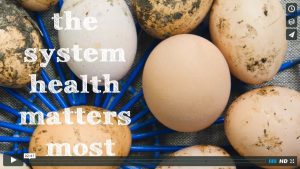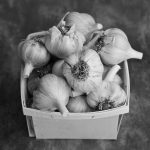Establishing agricultural resilience is accomplished through creating a healthy and nimble system with diverse redundancy. The resulting Resilient Agriculture, fka Regenerative, is the practical implementation of that understanding gained from millenniums of trial & error, and more recently through bleeding edge innovation which looks closely at the broad reaching values we earn by being part of nature instead of trying to forcibly control it. The process relies on the science of biomimicry which is based simply on the understanding of the regenerative toolkit intrinsic to nature and ecology.
Atop of the food web, we are what we eat. Moreover, underpinning agricultural resilience circular in nature must be the health of each part of the food chain. The realization that we’re (all trophic levels) dependent on each other for the wellbeing of the system as a whole can be best described as a OneHealth shared amongst human, animal, planet and environment.
The most pragmatic place to begin commitment to regenerative agriculture is at the top of the food chain – where proper practices invest in the health & humane treatment of the food animal. As results accrue and compound with value creation to the largest sector of our food system, associated farming practice deliver greater sustenance and reduction of risk through greater commitment to soils and systems. Within this interconnected web, each link can be directly correlated to our health, and gained throughout a shrinking planet for which we’re now responsible for shepherding the sanctity of system as a whole.
Conversely, practices of current conventional agriculture employed domestically with near singularity are best described as less farming and more resource mining. Our abundance of natural resources in North America has long since afforded domestic food production opportunity to take without clear perspective on long-term viability, nor accountability for increased reliance on inputs or environmental impact of externalities. Now, from practice of excessive use of these expensive and corrosive inputs, we’ve become hooked on a synthetic model of production that is cheap in food cost but expensive to the health of our society and the regenerative systems of the planet.
part 2: Regenerative Agriculture through focus on food animals



